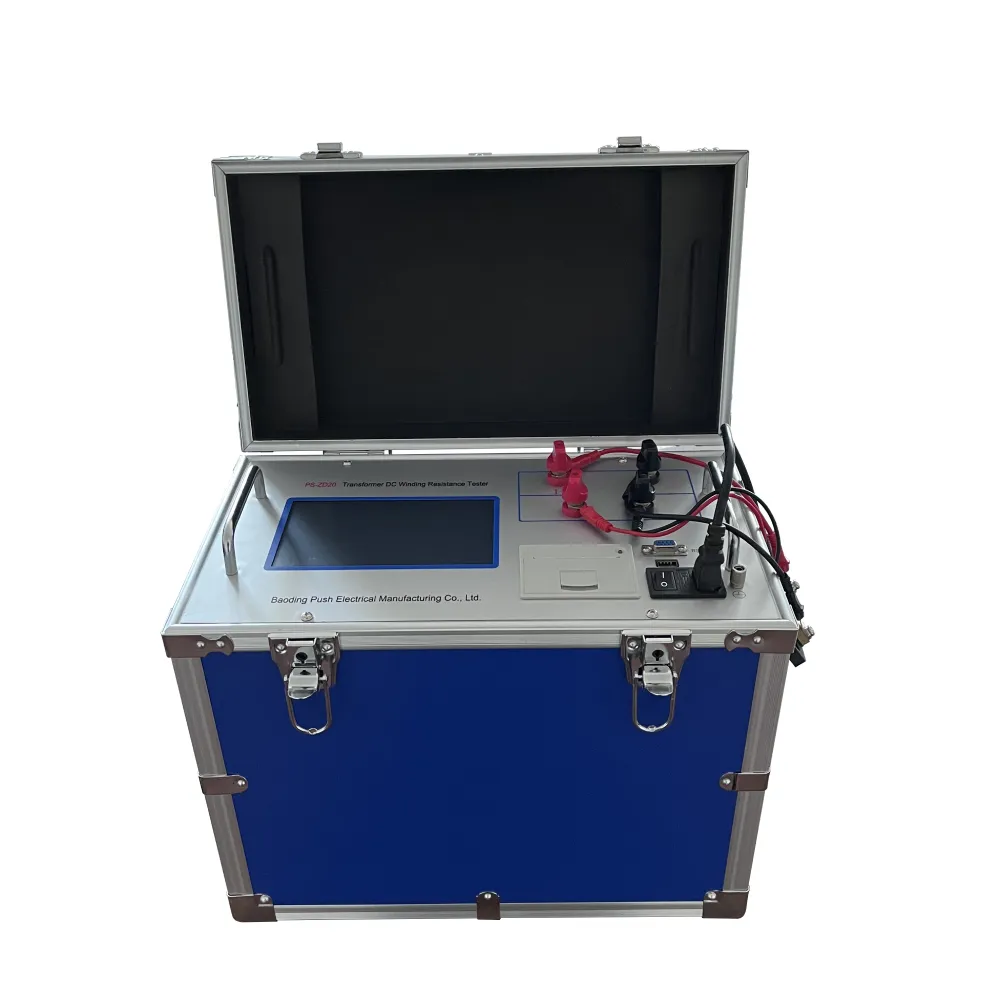 English
English


Exploring the Role of Fault Loop Impedance Meters in Electrical Safety Testing and Maintenance
Understanding Fault Loop Impedance Meters
In the realm of electrical engineering and safety, ensuring the reliability and safety of electrical installations is paramount. One of the critical tools used for this purpose is the Fault Loop Impedance Meter. These meters play an essential role in identifying potential hazards and ensuring that correct earth fault protection mechanisms are in place.
What is a Fault Loop Impedance Meter?
A Fault Loop Impedance Meter is an instrument used to measure the impedance of the electrical loop that includes the supply source, the load, and the protective earth. The primary function of this meter is to determine the impedance of the fault loop path that current would flow through if a fault occurred. It helps in assessing the effectiveness of the earthing system and ensures that it can safely clear a fault.
Importance of Fault Loop Impedance Measurement
The measurement of fault loop impedance is crucial for a number of reasons
1. Safety In the event of an electrical fault, an effective earthing system ensures that sufficient fault current flows to trip protective devices like circuit breakers. A high loop impedance could prevent these devices from operating properly, which might lead to electrical shock hazards or fire risks.
2. Compliance Electrical installations are subject to various regulations and standards. Measuring fault loop impedance is often a requirement to ensure compliance with these standards, such as the National Electrical Code (NEC) or International Electrotechnical Commission (IEC) standards. Compliance not only protects equipment and property but also safeguards lives.
3. Preventative Maintenance Regular testing using a fault loop impedance meter can identify deterioration in connections or the earthing system over time. Identifying these issues proactively allows for timely maintenance and prevents larger failures in the future.
fault loop impedance meter

How Does a Fault Loop Impedance Meter Work?
The operation of a fault loop impedance meter is relatively straightforward. When the meter is connected to a circuit, it injects a small test current into the loop. The meter then measures the voltage drop across the fault loop, which is subsequently used to calculate the loop impedance using Ohm’s law (Z = V/I, where Z is impedance, V is voltage, and I is current).
Typically, these meters can measure various components of impedance such as phase to earth, phase to phase, and earth resistance, providing comprehensive data about the loop's integrity. Some advanced models even have features that display prospective short-circuit currents, which are vital for assessing protection device performance.
Choosing the Right Fault Loop Impedance Meter
When selecting a fault loop impedance meter, there are several factors to consider
- Accuracy Look for meters that provide precise measurements, as even small discrepancies can lead to incorrect assessments. - Range of Measurements Ensure the meter can evaluate a wide range of impedances to accommodate various installations. - Safety Ratings The device should have necessary safety certifications to ensure reliable performance under different conditions. - Ease of Use An intuitive interface and clear display can facilitate easy and accurate readings, especially for field technicians.
Conclusion
In conclusion, a Fault Loop Impedance Meter is an invaluable tool in electrical safety and maintenance. By measuring the loop impedance, these devices ensure that electrical systems can handle faults effectively, protecting both equipment and lives. Given the growing demand for reliable electrical installations, understanding and utilizing fault loop impedance meters will continue to be essential in the industry. Regular testing not only ensures compliance with safety regulations but also fosters a proactive approach to electrical maintenance, ultimately reducing the risks associated with electrical faults.
-
Differences between open cup flash point tester and closed cup flash point testerNewsOct.31,2024
-
The Reliable Load Tap ChangerNewsOct.23,2024
-
The Essential Guide to Hipot TestersNewsOct.23,2024
-
The Digital Insulation TesterNewsOct.23,2024
-
The Best Earth Loop Impedance Tester for SaleNewsOct.23,2024
-
Tan Delta Tester--The Essential Tool for Electrical Insulation TestingNewsOct.23,2024





